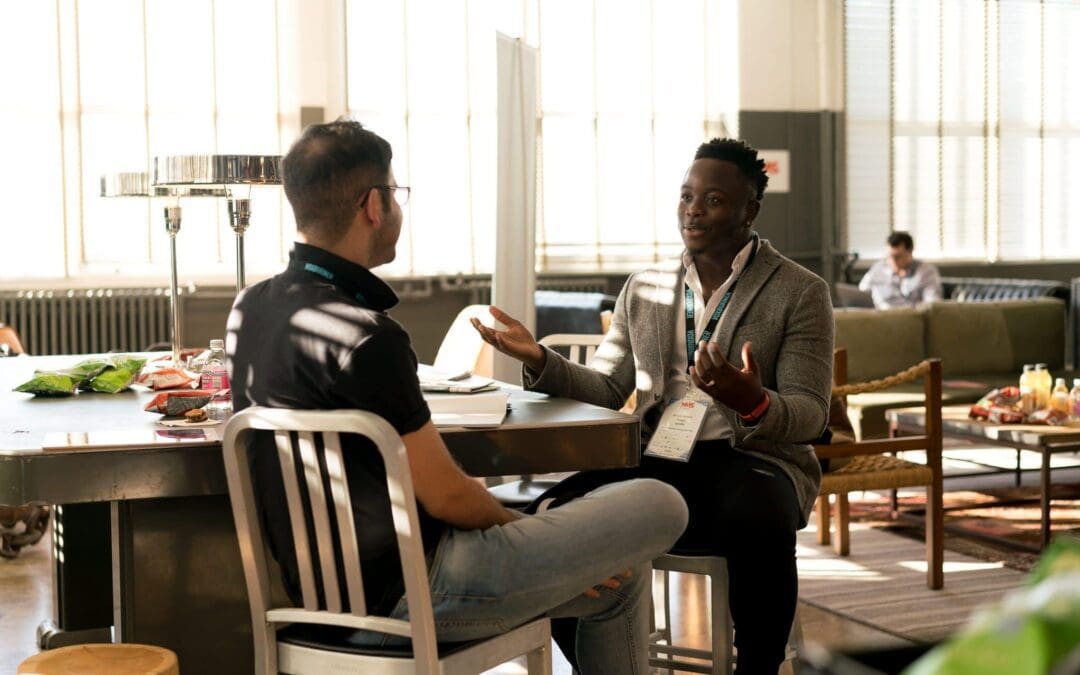As communicators and marketing professionals, our task lists are long. From mastery of language and strategy to understanding everything we can about complex products, most folks in the content game will tell you — it ain’t easy.
But you know what also isn’t easy? Navigating spaces that aren’t designed to accommodate you.
In the physical world, many communities take (federally mandated) steps to create requirements for more accessible options for most people. This includes features like crosswalks that speak for the sight-impared, ramps for those who use wheelchairs or signage with multiple languages.
However, this care often gets neglected in digital environments even though the Americans with Disabilities Act (ADA) applies to virtual places like websites and applications, too. Neglecting to adhere to ADA regulations can be a legal liability and at the end of the day, it’s just bad business.
It is my hope that by sharing a discussion that is now a core memory (along with a few tips) you’ll be inspired to get creative in new ways to create digital spaces that are inclusive, accessible and reflective of the diversity of our human experience.
When a drop hits…
One day, a former colleague and I were getting to know each other. About 10 years prior he had been in an automobile accident that resulted in him having to use a wheelchair. He graciously recounted his stages of grief, denial, anger, and acceptance of his life as it is now, but there was one standout comment that stuck.
When I asked what his biggest challenge was he said, “Nicole, the hardest thing is that there is always someone in the handicapped stall. It’s the only one with enough room for me to maneuver, the others are always open, and there isn’t much I can do besides wait until that person is done using it. And then they come out, and 9 out of 10 times it is someone who doesn’t need the extra room.”
I’m not quite sure why that resonated — perhaps the guilt of knowing full well that I was one of those people who used the larger stall while the others remain open — but it was one of those talks that changed how I approach everything.
…it ripples
Before long, I found myself noticing other places where someone might experience a challenge if they were trying to use a tool, platform, or space that wasn’t designed to accommodate them.
I call it the “Honda Element Effect.” You may have never given it a second thought, but once you know it exists, you can’t help but experience it everywhere. (Bet you didn’t know that from here on out you will notice every single Honda Element — if you’ve never seen one, they are big, boxy SUV-type cars that were manufactured from 2002–2011).
From videos on social media without captions to stock image selections that lacked representation for anyone other than a cis white, non-disabled male, I was shocked how many digital experiences were not very inclusive at all — and they were everywhere.
So I set out to learn more about how to create better digital products for all of us.
It doesn’t matter where you begin, so long as you do
There is no right way to start making more inclusive content, so I recommend embarking on a life-long journey to learn all you can to integrate best practices into your digital work. If you don’t know where to start, the Web Accessibility Initiative has a great fundamentals page with links to multiple resources.
For the curious, brave or impatient, here are a few things you can start doing right now for more accessible content:
- Alt text. Many web, email, and social media platforms already have the prompts or form fields to add items like alt text for pictures, which can help describe and give context to an image for someone using a screen reader. (Bonus, it’s also good for SEO).
- Use captions for video. Whether people prefer to scroll without sound or don’t have the luxury of hearing, with the plethora of AI tools in existence there is zero excuse for forgoing captions on your videos. (One of my favorites is Rev).
- Camel case your hashtags. I am notorious for calling this one out every time I see it — when you camel case your hashtag (i.e., #TagsLikeThisAreGood) each capitalized letter starts a new word for someone using a screen reader. If you don’t (aka #thistagisamess), the screen reader has to call out each individual letter.
- Check your idioms. Idioms, those phrases or expressions that typically present a figurative, non-literal meaning attached to a phrase, (i.e., it’s raining cats and dogs) can have interesting origins. It’s recommended to do a quick Google of “is it appropriate to say [insert idiom]” or “what is the origin of [idiom]” to confirm that the common phrase you are about to use doesn’t have a racist connotation attached to it.
- Consider your stock images. Today’s buyers are more diverse than ever before — make sure to pair your content with pictures that reflect a wide range of humans. (This page is for scholarly writing, but it has some nice tips for anyone curious about selecting more inclusive stock images).
Embracing my “Honda Element Effect”
Creating more inclusive digital spaces will always be a work-in-progress, but it’s definitely a commitment worth making. (And once you know it’s there, you gotta chip in to help).
I know I’ve only scratched the surface for integrating better practices into your content creation process. Like my conversation with my former colleague, even if you don’t need it I hope you’re inspired to take the extra effort to make your emails, web pages, social media posts and more, more accessible for everyone.
Looking for ways to reimagine your digital spaces? Our Content Matterz team would love to connect! Reach out today.
